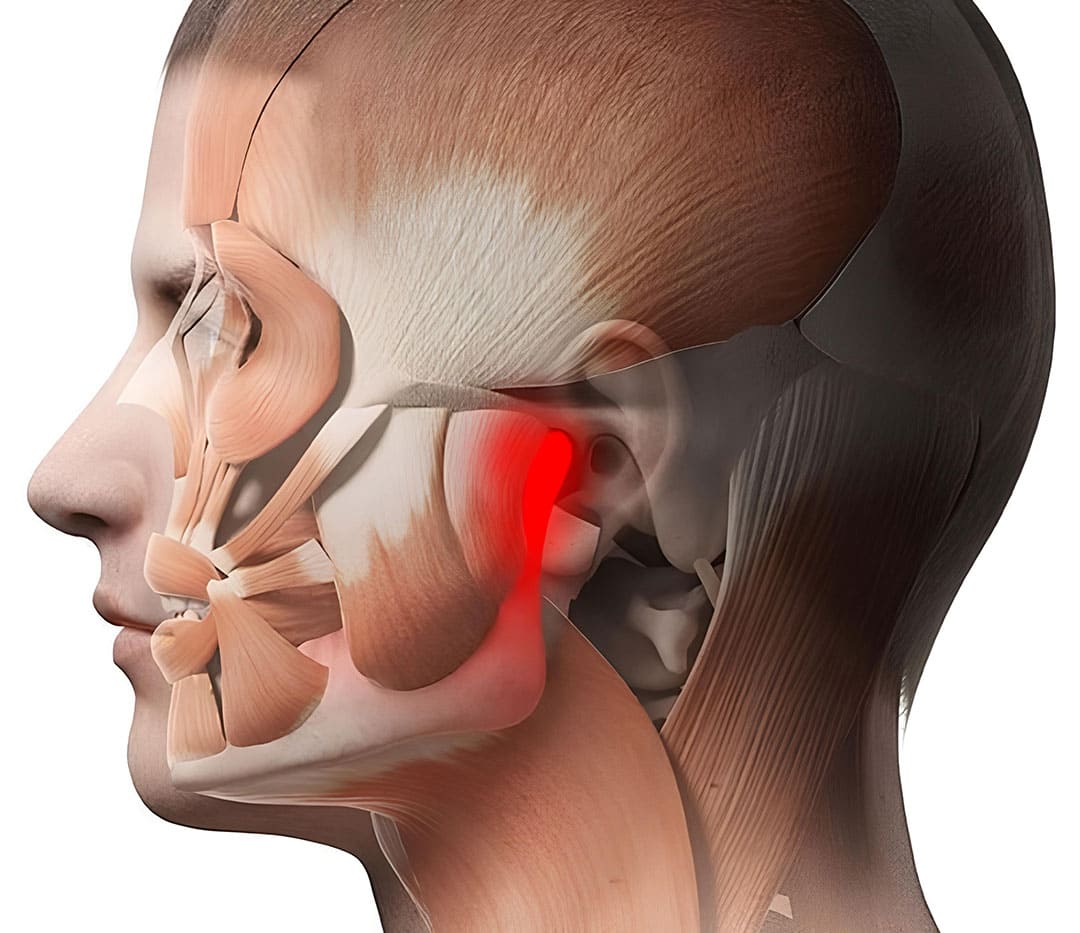
Teeth Clenching
and Grinding
Jaw Joint Treatment
The jaw joint and masticatory muscles are complex structures that control oral movements and problems in these areas can negatively affect daily life. TMD refers to disorders of the jaw joint or chewing muscles. Symptoms of TMD can include jaw pain, restricted jaw movements, clicking or locking of the jaw, headaches and earaches.
Here are the different causes and treatment methods for TMD:
Jaw Joint and Chewing Muscles
Jaw Joint:
The temporomandibular joint is the joint that connects the jaw to the skull and provides jaw movements. Problems in this joint can lead to pain and dysfunction.
Chewing Muscles:
Chewing muscles are muscle groups that control jaw movements. Overuse or injury to these muscles can also cause TMD.

TMD Treatments
-
Physical Therapy and Home Care
-
Management of TMD usually starts with simple lifestyle changes and home care. These include hot and cold compresses, gentle jaw exercises and relaxation techniques to relax the jaw muscles. Physical therapy is also recommended to strengthen the jaw muscles and improve their flexibility.
-
Botox Treatment
-
In the case of hypertrophy (enlargement) of the jaw muscles, Botox injections can reduce pain by relaxing the muscles. This treatment can be particularly effective in cases such as teeth clenching or grinding (bruxism).
-
Joint & Stabilization Splint
-
Splints are devices used to increase the stability of the jaw joint and relax the jaw muscles. A joint splint reduces pain and promotes healing by limiting jaw joint movements. A stabilization splint, on the other hand, helps to stabilize jaw movements and prevents overnight clenching.
-
Arthrocentesis
-
This procedure involves inserting a needle into the jaw joint to remove fluid from inside the joint and flush the joint cavity. Arthrocentesis is used when there is congestion or inflammation in the jaw joint and can help reduce pain.
-
Jaw Joint Surgeries
-
Surgery is considered in severe cases of TMD where other treatment methods have failed. Surgery may be performed to repair or reposition the articular disc, smooth the articular surfaces or correct structural problems that occur within the joint. The type of surgery is determined depending on the patient’s specific condition and the severity of their problem.
Management of TMD usually starts with simple lifestyle changes and home care. These include hot and cold compresses, gentle jaw exercises and relaxation techniques to relax the jaw muscles. Physical therapy is also recommended to strengthen the jaw muscles and improve their flexibility.
In the case of hypertrophy (enlargement) of the jaw muscles, Botox injections can reduce pain by relaxing the muscles. This treatment can be particularly effective in cases such as teeth clenching or grinding (bruxism).
Splints are devices used to increase the stability of the jaw joint and relax the jaw muscles. A joint splint reduces pain and promotes healing by limiting jaw joint movements. A stabilization splint, on the other hand, helps to stabilize jaw movements and prevents overnight clenching.
This procedure involves inserting a needle into the jaw joint to remove fluid from inside the joint and flush the joint cavity. Arthrocentesis is used when there is congestion or inflammation in the jaw joint and can help reduce pain.
Surgery is considered in severe cases of TMD where other treatment methods have failed. Surgery may be performed to repair or reposition the articular disc, smooth the articular surfaces or correct structural problems that occur within the joint. The type of surgery is determined depending on the patient’s specific condition and the severity of their problem.